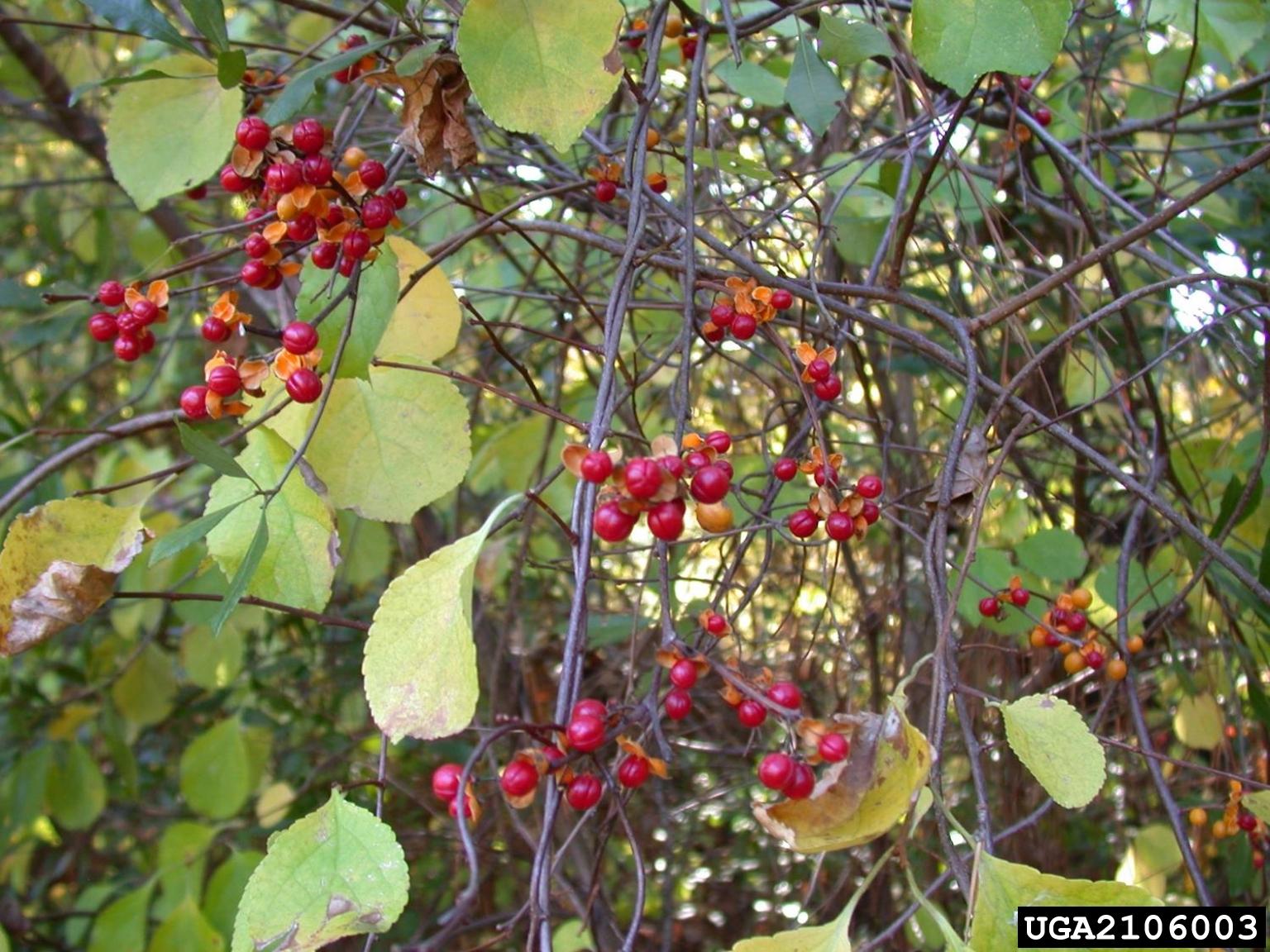About Oriental bittersweet (Celastrus orbiculatus)
Life cycle
Woody, perennial vine
Growth habit
Climbing, deciduous vine; leaves rounded to obovate, alternate, simple with bluntly toothed margins


Oriental bittersweet (Celastrus orbiculatus) fruit ripens in the fall. Do not cut them for fall decorations as this helps to spread this noxious weed.
Photo: James R. Allison, Georgia Department of Natural Resources, Bugwood.org
Woody, perennial vine
Climbing, deciduous vine; leaves rounded to obovate, alternate, simple with bluntly toothed margins

Seed; flowers are inconspicuous followed by green to yellow fruits that burst open to display orange-red seeds persisting into fall after leaf drop. Often used to make wreaths and for fall decorations. This is not recommended because seeds can be inadvertently dispersed to other areas when moving the vines.

Forms tangles and thickets when left alone; can strangle other plants by girdling stems
Manual removal as soon as possible, especially before fruit production
Invasive Vine and Groundcover Control
(PDF) Plant Invaders of Mid-Atlantic Natural Areas
(PDF) Weeds Gone Wild: Alien Plant Invaders of Natural Areas
Oriental Bittersweet | Penn State Extension
Still have a question? Contact us at Ask Extension.